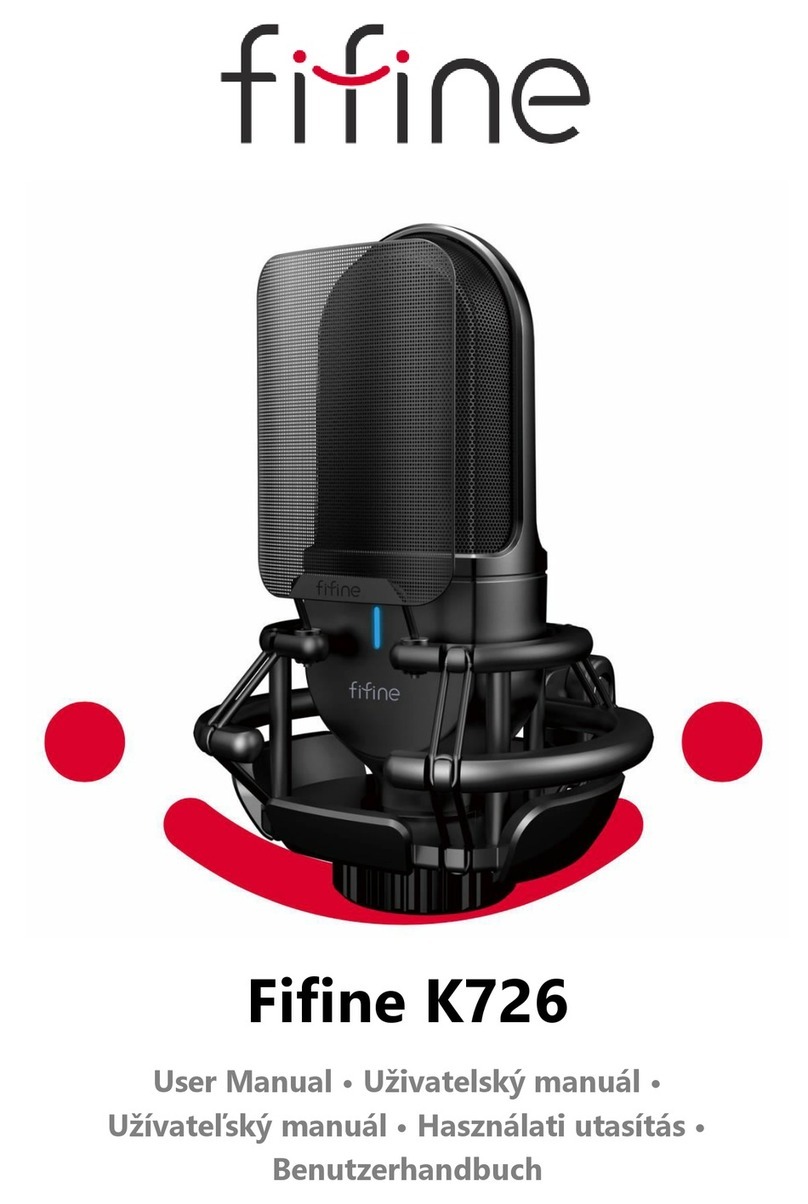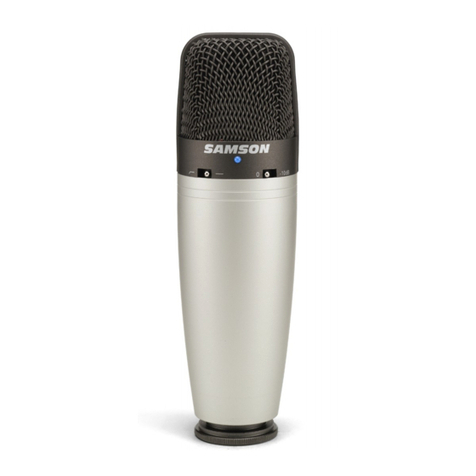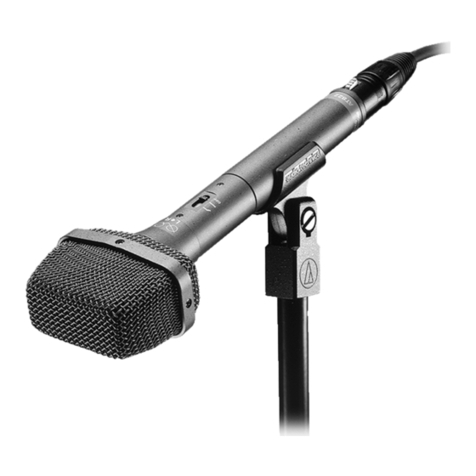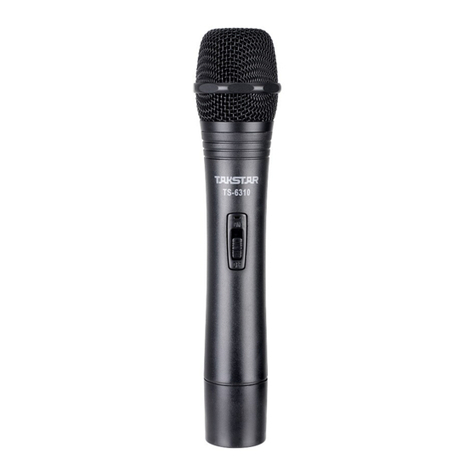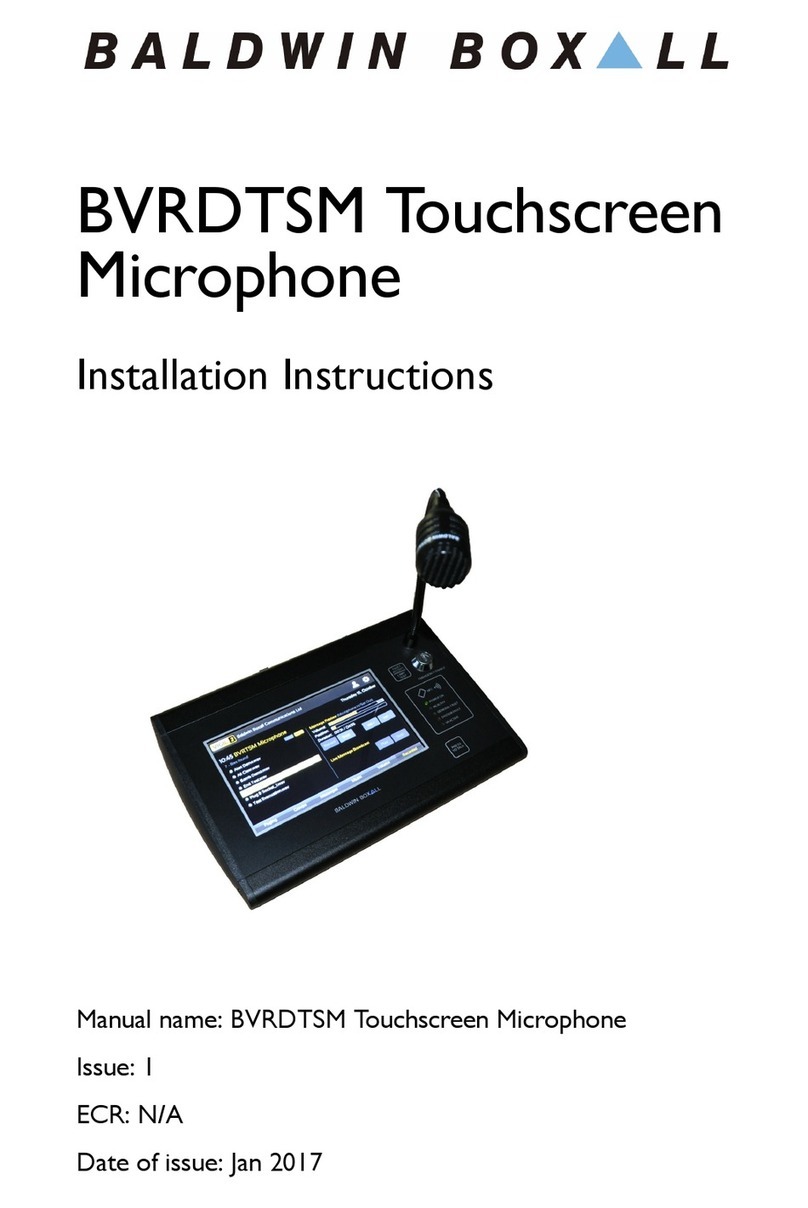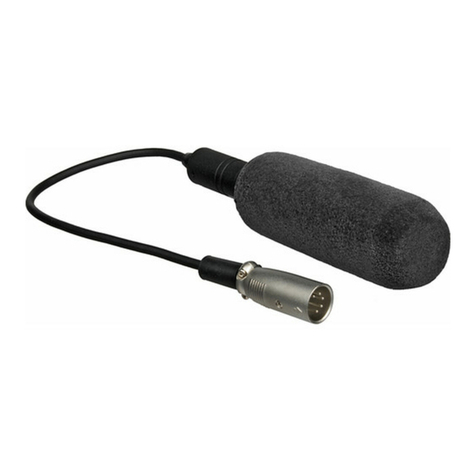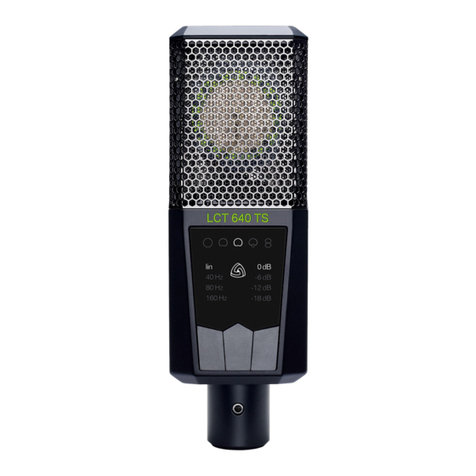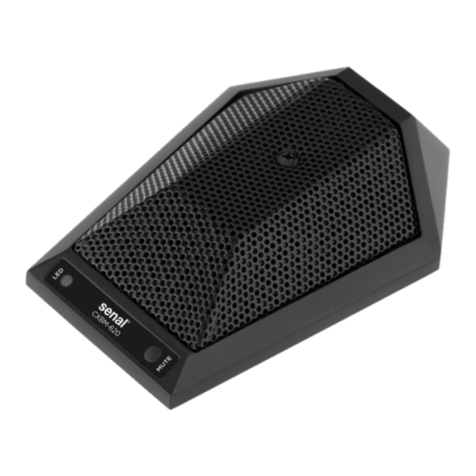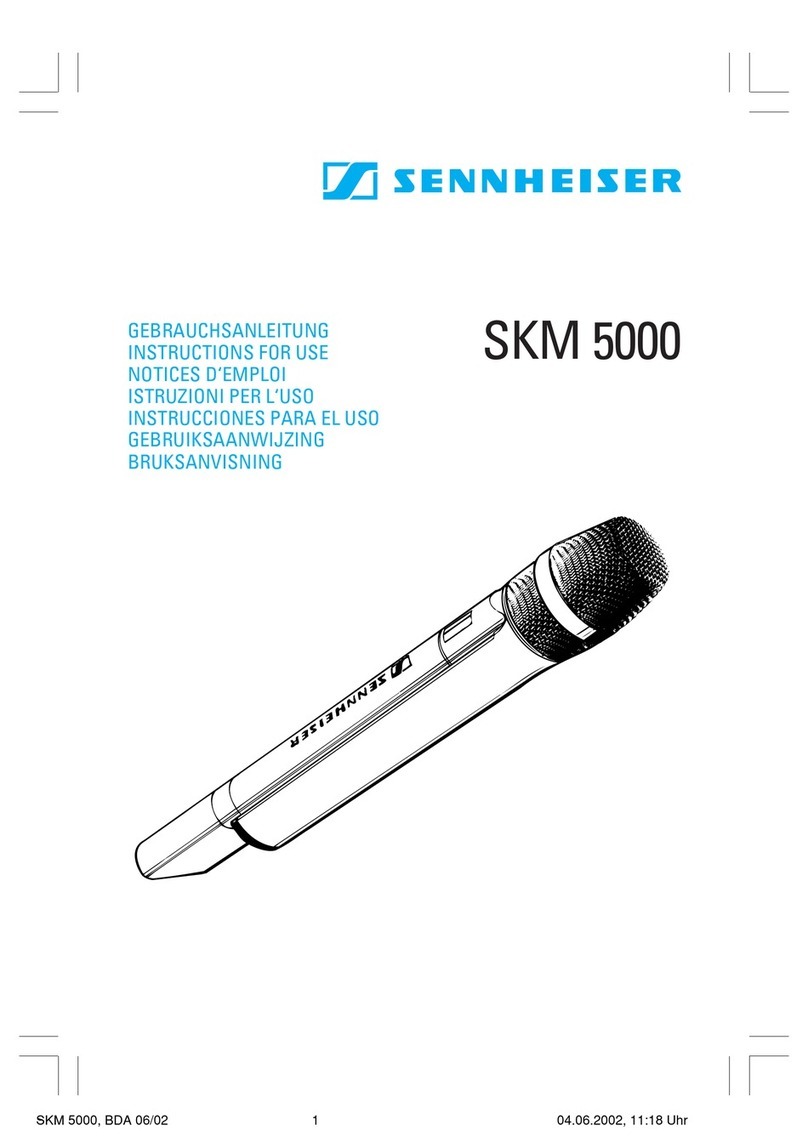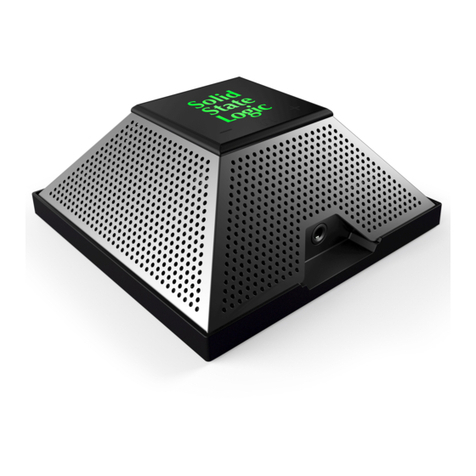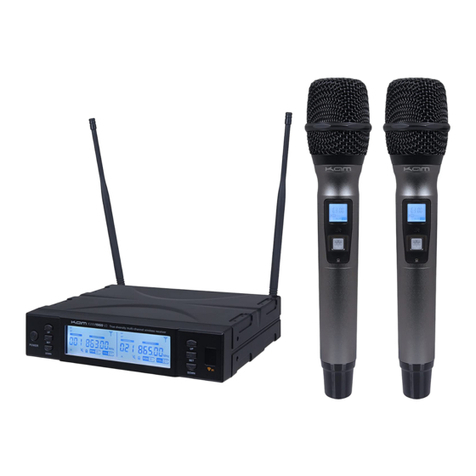Sonosax SX-M2 User manual

SX-M2 USER MANUAL
Back to SX-M2 page
Back to HOME page
By buying the SX-M2 you have acquired a high quality microphone amplifier used
by many professional sound engineers. This instrument has been developed to the
quality standards SONOSAX is renowned for, using to your advantage our many
years of experience in sound applications. Easy to use, it provides you all the
necessary features you need for high quality recording. In combination with two
good microphones and a DAT recorder, for instance, the SX-M2 enables you to
record a master tape of excellent quality which could be used for the production of
compact discs.
Read this instruction manual carefully as it will help you to take full advantage of
your SONOSAX SX-M2. Please note that this manual applies to standard versions,
and some slight differences may exist.
1. IDENTIFICATION
The serial number appears on the underside of the instrument, as shown :
SX-M2/48V/041'XXXX. 48V indicates that the mic power supply is 48 volt phantom.
Never modify or damage this label as it contains essential factory references which
are required for any eventual repairs under warranty.
2. WARRANTY
The warranty is valid for a period of one year starting from the date of purchase and
covers parts and labor, shipping costs not included. Only officially appointed
distributors are allowed to warranty repair SONOSAX products; otherwise, repair
work covered by the warranty should be referred to the factory.
Never try to repair your SX-M2 yourself. It is partially manufactured on
surface mount technology, and would require special tools.
Any damage caused by tampering, misuse or dismantling of the instrument
will not be covered by the warranty and could be considered a reason for
rendering the warranty null and void.
3. USING BATTERIES OR NiCd ACCUMULATORS
The SONOSAX SX-M2 can be powered by two 9 volt alkaline batteries (UCAR
6LR61 or equivalent) or by two NiCd rechargeable accumulators (UCAR RC22 or
equivalent). Place batteries or accumulators in the two compartments at the back of
the SX-M2.
Make sure to respect the + and - polarities.
Page 1

SX-M2 USER MANUAL
Never leave batteries or accumulators in the battery compartment when the
SX-M2 is not in use for several days.
Use only top quality batteries.
4. OPERATING WITH BATTERIES OR ACCUMULATORS
Move the "POWER" switch to the left. After 2 to 3 seconds, the "ON" led at the
center of the front panel will flash every 3 seconds.
5. LOW BATTERY WARNING
The "ON" led will flash every second when the total battery voltage drops to 14
volts. (See AUTONOMY)
6. AUTONOMY
The autonomy of your SONOSAX SX-M2 is proportional to the type of
batteries/accumulators, and the kind of microphones used. The table below shows
different figures (each 48V microphone uses 2mA) :
NICD
ACCUMULATORS
ALKALINEPOWER
48voltsdynamic48voltsdynamicmicrophones 120mn180mn300mn440mn
warning(14v) 10mn15mn140mn200mn
reserve(12v) 130mn195mn440mn640mn
TOTAL
7. EXTERNAL POWER
The SONOSAX SX-M2 can also be powered from an external DC source, from 12
to 24 Volts, via the "DC IN" connector.(Battery powering is automatically disabled
once an external DC source is used.) Once the external power supply is connected,
the SX-M2 may then be operated as when powered by batteries or accumulators. If
the "ON" led flashes normally (every 3 seconds), the external voltage is between 14
to 24 Volts. If it flashes every second, the external voltage is below 14 Volts.
Polarity : + = center, - = outside collar
8. MICROPHONE POWERING
Page 2

SX-M2 USER MANUAL
To ensure the correct power supply of condenser mics, move the "MIC POWER"
switch to the right. (The standard version provides 48 Volt phantom). When using
dynamic microphones or line, leave the "MIC POWER" switch in the left position.
9. GAIN SELECTOR
The gain switch has three positions. The center position ensures the 0dB gain
(unity gain). In this case, the output level is equal to the input level. This could be of
help when the SX-M2 is used as an impedance adapter, or a balanced line driver.
The "LO" gain position allows 6dB to 40dB gain, and the "HI" gain position, 20dB to
76dB.
10. OVERLOAD INDICATOR
The two "OVD" LED's indicate the limit of 6dB before the clipping point. The
overload reference is proportional to the DC voltage. Thus the lower the power
supply voltage, the higher the possibility of the "OVD" LED’s lighting up.
11. LOW CUT FILTER
The "LF CUT" filter allows cutting of very low frequencies. To turn on this filter,
move the "LF CUT" switch downward.
Use this filter only if necessary!
12. INPUT CONNECTORS
The two input connectors "LEFT IN" and "RIGHT IN" are XLR type and are located
on the right side of the SX-M2. Inputs are balanced transformerless. To connect with
an unbalanced device, bridge the PIN 1 and the pin 3 to the ground.
13. UNBALANCED LINE OUT
The stereo output of the SX-M2 "LINE OUT", intended for its connection to an
instrument with an unbalanced input (a DAT recorder, for example) is located on
the right side. The connector is a 3,5mm stereo mini-jack.
Tip = LEFT, center ring = RIGHT.
Always use a good quality jack. Low priced jacks tend to have larger
mechanical tolerances which may lead to loose size creating noise and bad
signal transmission.
Page 3

SX-M2 USER MANUAL
14. BALANCED OUTPUT CONNECTORS
Balanced outputs "LEFT OUT" and "RIGHT OUT" are found on the left of the
SX-M2. These outputs are up to professional standards and would, for example,
enable connection to a recording machine in a studio. Connectors are XLR type
and the outputs balanced transformerless. To connect with an unbalanced device,
bridge the PIN 1 and PIN 3 of the connector.
15. RECOMMENDATIONS
The characteristics of the SONOSAX SX-M2 enable its user to connect it to
any professional microphone. The quality of the sound obtained thus greatly
depends on the choice of microphones and on how they are positioned. It is
then of utmost importance to clearly define the type of situation to be
recorded when choosing the microphones to be used, and to determine
their positioning for optimal results.
Adjustment of the "GAIN", and the choice of gain positions also depend on
the type of microphone used, as well as the nature of the source of sound.
Several test sessions are thus highly recommended in order to determine
the best way to proceed with the recording. One of the simplest methods is
to use a high level (i.e. fortissimo in classical music), adjust the "GAIN"
button until "OVD" LED’s turn on at the highest sound levels, and turn the
button backwards about 45 degrees. This method enables optimal
calibration for signal to noise ratio and incidentally, protects against
overloading the system.
Like all SONOSAX products, the SX-M2 has a relatively high input
impedance providing a substantial improvement in characteristics which are
critical to the signal. Always reduce the gain to a minimum (or apply
maximum attenuation) in any unused channel to prevent noise pick up. It is
not a good practice to switch microphone powering during recording as it
may introduce noise till the DC/DC converter is stabilized.
16. SPECIAL VERSIONS
SX-M2/LS
Designed for use by sound engineers, working frequently with the same pair of
condenser or electret microphones, this version provides the same high quality
amplification and features as the SX-M2.
The difference between the two versions is that the SX-M2/LS allows the user to
directly connect the capsules without the microphone body thus creating a
significant diminution of power consumption.
Technical changes
To be able to place the electronics of the microphone body inside the SX-M2/LS,
LEMO connectors are used instead of the NEUTRIK XLR for the microphone inputs.
For those using stereo microphones with the Schoeps active Y-cable a 5 pin
Page 4

SX-M2 USER MANUAL
BINDER connector is also available.
LEMO in L: Shield = Gnd, Pin 1 = +10V, 2 = +48V, 3 = signal in
LEMO in R: Shield = Gnd, Pin 1 = +10V, 2 = +48V, 3 = signal in
BINDER: Pin 1 = Gnd, 2 = L in, 3 = R in, 4 = +6.2V, 5= +48V
The SX-M2/LS can be used for all condenser or electret microphones having the
possibility of changing the capsules on the microphone body, such as: Colette
series of Schoeps, Blue Line of Sanken, or the similar line of Neumann.
It is important for these kind of microphones to use a good quality active cable.
When buying the cable from a microphone manufacturer, do inform them that the
amplification electronics often used in the cables is not required.
SX-M2M
A very handy feature implemented on this version allows the user to switch the
output of the amplifier on to Mono. The input signal of one Microphone is now
available on both outputs. Using two microphones, a second switch allows to mix
the L+R input to a mono signal which is available on both outputs.
Subject to change without notice
Last update 28/05/99 LG
Back to SX-M2 page
Back to HOME page
Page 5
Table of contents

